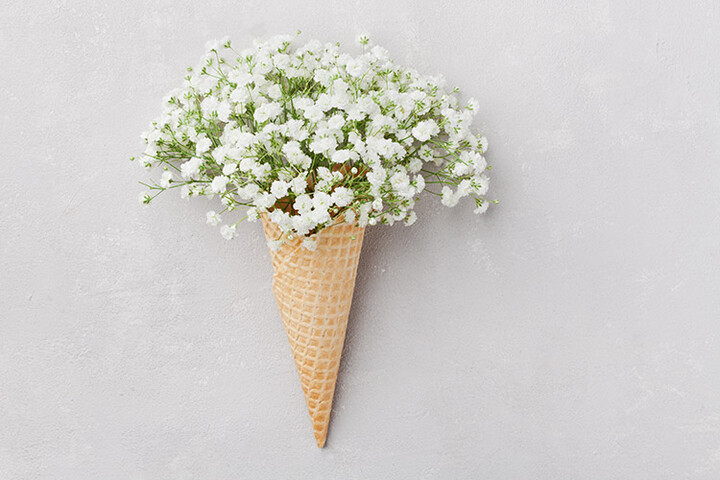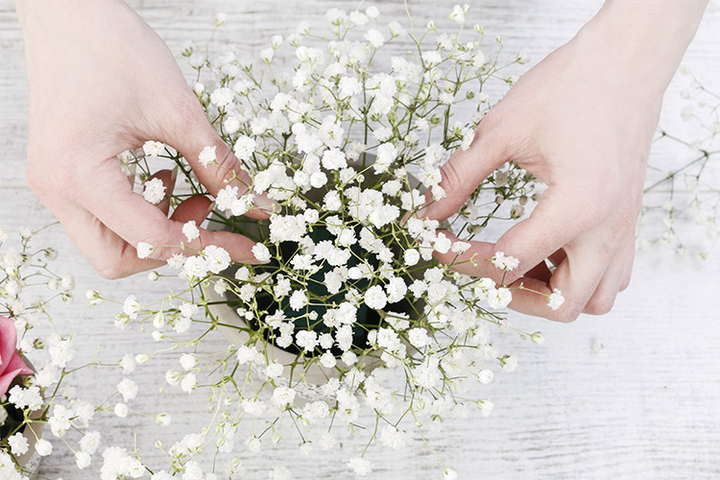
Described as one of the most charismatic plants, Gypsophila boasts a graceful appearance and is an ideal option for both the garden and the home.
This versatile plant can be grown alone on a huge scale, or alternatively, alongside almost every other kind of flower. There are two styles of plants to choose from, one Gypsophila which grows upright, and another Gypsophila which boasts more of a crawling nature. The latter is sometimes known as ribbed Gypsophila.
Locations
Gypsophila comes in the shape of a typical Eastern European plant, which also grows in an array of areas in West Siberia and has now made its way to Europe. In Central Europe, Gypsophila can be found in both Germany and Austria. Other areas that play host to this plant include the Italian South Tyrol, Mecklenburg-Pomerania, and Brandenburg.
Preferred growing conditions
This particular species of plant prefers to grow in sandy areas and grasslands. If you follow the recommended care instructions, you should be able to easily ensure optimal cultivation.
Care
This picture-perfect flower is an ideal option for a flower bed. Often nicknamed ‘baby’s breath’ due to its delicate white flowers, it’s able to grow to a medium height when planted in the garden and over one meter in height in the wild. Certain plants found in the American mountains have been known to reach an even higher height.
Region and soil
Gypsophila prefers warm, sandy ground. For best results choose an area that contains chalk and that is on the permeable side.
When grown in a warm environment, this plant is guaranteed to flourish. This is why Gypsophila often takes to cracks in stones and walls in dry regions. When growing in the garden, it’s important to keep this in mind – choose a semi-shady, wind-resilient place for best results, as strong winds can damage the plant.
Soil
Avoid moist, heavy soil and ground when growing Gypsophila, as it’s unlikely to flourish.
It’s important to pick or prepare a really sandy ground, complete with small pebble stones. Adding pebble stones to the soil will ensure all rain water is drained from the soil and that the plants are kept dry. When concerning Gypsophila, the dryer the better! In addition to this, the soil should be very low in nutrients.
If the soil is lacking chalk, you will want to add a substrate.

Preparation
Post sowing the seeds, it’s important to cover the area with a thin layer of soil. Although these plants prefer a dry environment, you will need to water the area and keep it moist in the initial stages of growth.
Alternative methods of growing include sowing the seeds in a cold frame or in propagator trays. Place the tray in a bright, warm area for best results. This will create the ideal micro climate for the seeds to flourish. In order to prevent rotting, air the propagator tray from time to time. Once the plants show between four and five leaves, move them to a pot.
Planting time
Gypsophila seeds are both annual and perennial, and are sown outside in March or April.
If the seeds are very small in size, avoid sowing them too densely, as each single plant will expand during the growth phase. If planting between April and May, cultivate Gypsophila in a greenhouse, prior to planting outdoors.
Transferring to another location
When putting the plants in a pot or moving them to an alternative location, it’s beneficial to know how much space the plants require.
Certain species will necessitate different amounts of space. For example, Gypsophila repens grows in a wide network and as such, demand around 50 cm of space between each plant. Without this space, they won’t be able to optimally expand.
Gypsophila family
With its individual soil needs, you need to be careful when choosing what plants to plant Gypsophila next to. One great option is Centranthus, as it boasts both similar demands and growth aspects.
Other options include small, tender plants, complete with beautiful blossoms, as these can enrich the flower bed of Gypsophila. In addition to the above, Mediterranean herbs, including sage lavender necessitate little water and due to this, make a great pairing for Gypsophila.
Cutting
Cutting and breeding Gypsophila go hand in hand. If you need to cut back these plants, you can use the cuttings to breed others. Simply place them in a stone garden adjacent to the mother plant, or in a small pot.

Watering
Gypsophila is a low maintenance plant perfectly suited to those with a busy schedule. In fact, it requires no water during the fertilization process. It’s only in long periods of dryness that the plants require a little water, which can be done by hand or by rainfall.
Breeding
Breeding is achieved by sowing more seeds or by the multiplication of cuttings. Any removed branches can be used to breed new plants.
If you choose to collect the seeds from this plant, you’ll be well prepared when it comes to planting Gypsophila the following year. In certain cases, fallen seeds will produce additional plants without any aid.
When planting cuttings, use small flower pots brimming with sandy soil. For best results and to encourage root development, add a small amount of growing soil. Avoid watering excessively, but at the same time, ensure the plants don’t dry out completely.
Caring for Gypsophila through winter
It’s often a challenge to get many plants through the winter months, and Gypsophila is no different. This is mainly due to low temperatures and frost being in abundance. To protect your perennials, cover with a layer of mulch made up of dry leaves and brushwood. This will help the plants to sprout again the following year.
As long as you can provide suitable growing conditions for Gypsophila in your outdoor spaces, you should manage to grow this plant in abundance. We’d also love to hear your experiences of dealing with this particular perennial, as we can share those experiences with our readers.